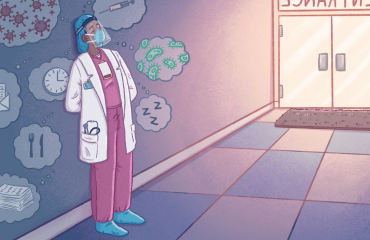No Surprises Act implementation includes telehealth – Healthcare Finance News
Photo: Reza Estakhrian/Getty Images
The No Surprises Act has providers scrambling to understand the implications of a law that went into effect earlier this month.
Under the law, patients treated by an out-of-network physician can only be billed at the in-network rate. It protects patients from receiving surprise medical bills from the ER or air ambulance providers or for non-emergency services from out-of-network physicians at in-network facilities.
Patients can no longer receive balance bills – the difference between what the provider charges and what the insurer pays – or be charged a larger cost-sharing amount.
The congressional intent was to save patients sometimes thousands of dollars in unexpected, or surprise, medical bills. But applying the No Surprises Act to clinical care is being left to providers to sort out.
A big question is the definition of an emergency and the benchmark used to determine when it ends, according to Kyle Faget, a partner at Foley who is co-chair of the firm’s Health Care and Life Sciences Practice Groups. She asked: Does the emergency end when the patient is stabilized, or should another standard apply? This includes emergency services for mental health and substance-use disorders.
Another question is around pre-planned services. Patients have to be notified who is providing the care and whether the physician is in-network. If the physician is out-of-network, patients must provide consent. But that can be tricky, for instance, if a patient scheduled for a planned C-section gets an out-of-network doctor who was not scheduled at the time the appointment was made.
At some hospitals, a new layer of administration is needed to comply with the law, Faget said.
Another area not well understood is how the law affects telehealth consults in the ER.
TELEHEALTH AND THE NO SURPRISES ACT
The law states that if treated by a telehealth clinician, the patient can only be billed the in-network rate, said Faget, who specializes in telehealth law.
Telehealth is often used in the ER, according to Faget. Most ER visits require a physician consultation, with hands-on medical care provided by a clinician other than the physician.
Pre-COVID-19, providers were in the embryonic stage of providing virtual emergency care, she said. The pandemic, and a shortage of physicians, spurred virtual care in the ER.
These telehealth providers often work on a contracted basis. They are likely credentialed at the hospital but are not hospital employees, Faget said.
This means they are not credentialed with the insurer. Under the No Surprises Act, they are now subject to the in-network rates negotiated by the hospital.
Telehealth ER physicians could negotiate their own contracts with insurers, but as a small group, they are not likely to get the higher rates they had prior to the implementation of the No Surprises Act.
“It’s an arduous contracting process, and small-group bargaining power is low,” Faget said. “The big hospital system has bargaining power. Those groups providing telehealth services won’t necessarily have agreements in place and, by definition, are out-of-network.”
Independent physician groups, which include telehealth docs, must now accept a rate that someone else has negotiated, Faget said. This fact can be more of an issue than the lower rate they’re now being paid, she said.
“I think telehealth will adapt,” Faget said. “I think it will become the way of doing business.”
WHY THIS MATTERS
The bottom line is that the No Surprises Act is doing what it promised to do – saving patients from getting a large bill not covered by insurance.
Surprise bills are a moral and ethical issue, Faget said. Patients, at their most vulnerable in the ER, are sent home only to get a $5,000 bill they never saw coming.
“It’s like kicking a person when they’re down,” Faget said.
However, in the larger healthcare ecosystem, ending surprise medical bills will ultimately result in cost-shifting, she said.
“Think about the system globally: somebody is paying for something somewhere,” Faget said. “At the end of the day, somebody’s going to have to pay.”
THE LARGER TREND
Providers have told her that the No Surprises Act incentivizes insurance companies to lower their payments, Faget said.
The American Society of Anesthesiologists has accused BlueCross BlueShield of North Carolina of doing this. A letter sent by BCBS of North Carolina to anesthesiology and other physician practices this past November threatens to terminate physicians’ in-network status unless they agree to payment reductions ranging from 10% to over 30%, according to ASA.
The ASA saw this as proof of its prognostication to Congress upon passage of the No Surprises Act: that insurers would use loopholes in the law to leverage their market power.
The AHA and AMA have sued the Department of Health and Human Services over implementation of a dispute-resolution process in the law they say favors the insurer. The arbitrator must select the offer closest to the qualifying payment amount. Under the rule, this amount is set by the insurer, giving the payer an unfair advantage, according to the lawsuit.
Twitter: @SusanJMorse
Email the writer: susan.morse@himssmedia.com
What the uptick in interest and usage of digital health will mean for the future of healthcare and what to expect in 2022 for the industry.
Thanks for signing up.
No subscriptions were selected or subscribe error happened.Please contact the customer service.
Thank you
HIMSS Media




